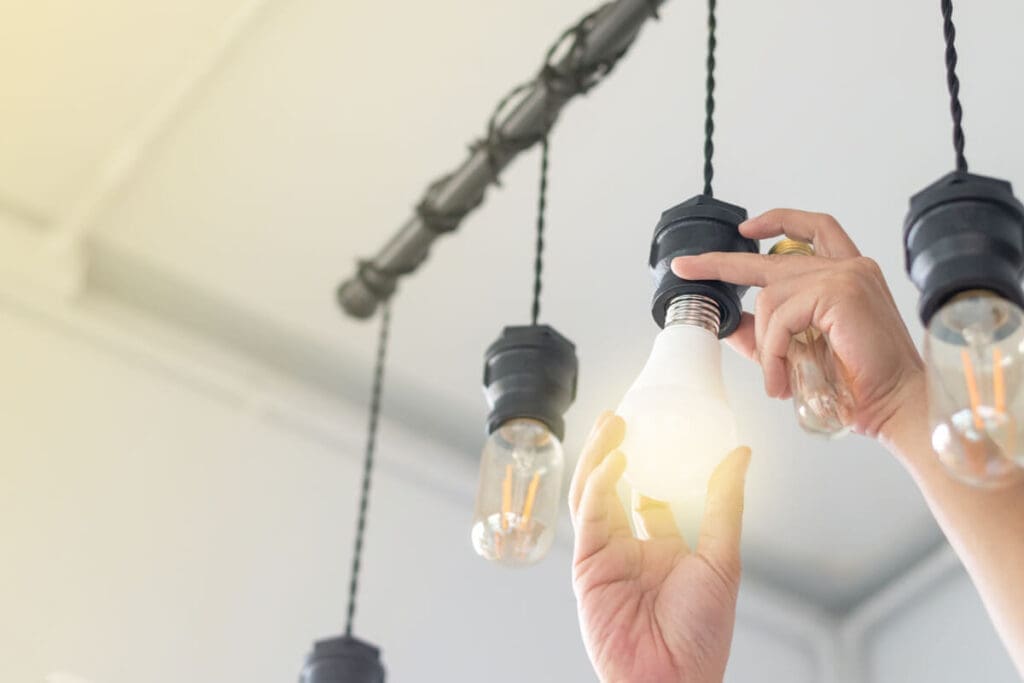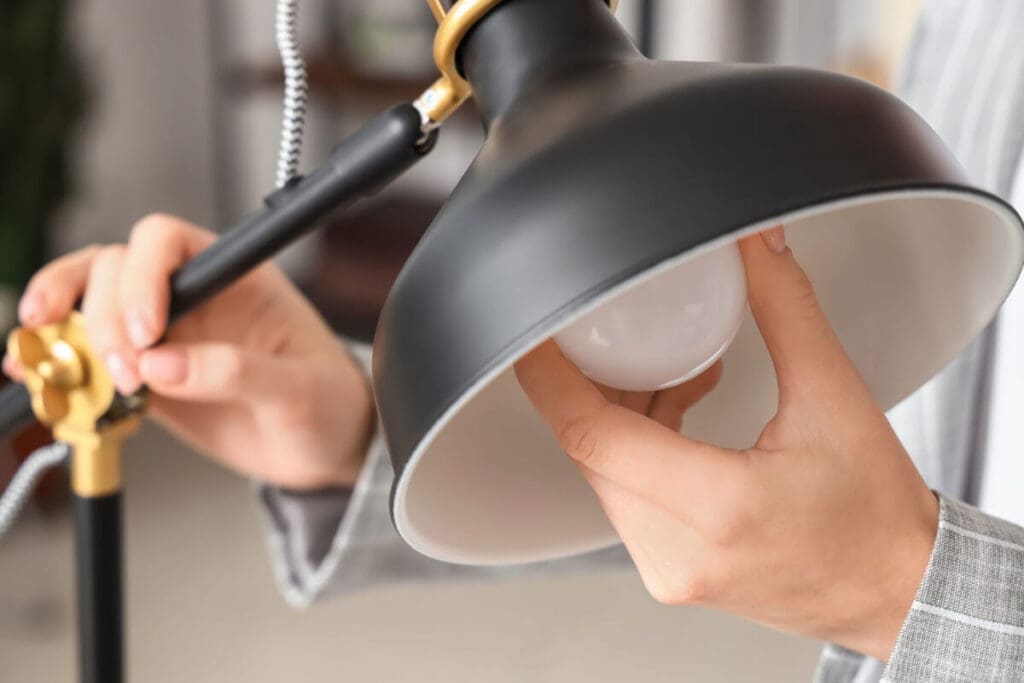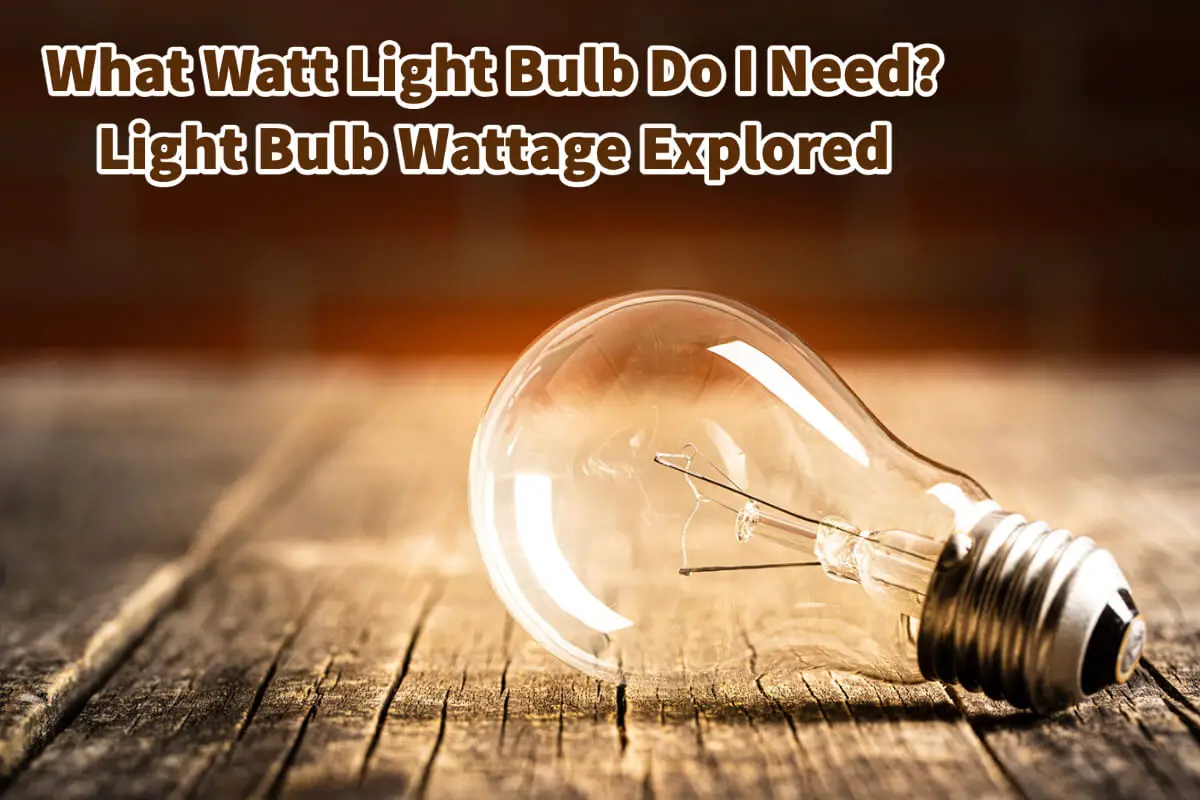The light bulb, a standard fixture found throughout our homes and workplaces, often goes unnoticed daily. However, do we know much about them?
Among every light bulb package’s specifications, wattage stands out. For many to understand, the wattage can seem too confusing. So, what does the wattage mean on a light bulb? And more importantly, why should we care?
Table of Contents
- Defining Light Bulb Wattage
- Light Bulb Wattage Vs. Brightness: Debunking The Myth
- Light Bulb Safety Instructions Are There For A Reason
- Related Content
Defining Light Bulb Wattage
At its core, wattage is a measure of energy consumption. Specifically, it represents how much energy a device uses, like a light bulb, in one hour. For instance, a 60-watt bulb uses 60 watts of electricity every hour it’s turned on.
Think of it like the calories in food; the higher the calorie count, the more energy it provides. Similarly, a higher wattage indicates higher energy consumption.
The Importance Of Light Bulb Wattage

Light bulbs are a staple in every household, illuminating our homes and providing clarity when natural light fades. But have you ever wondered about a bulb’s wattage specification and implications beyond flipping the switch? While it may seem like a mere number, the wattage of a light bulb holds significant importance for several reasons:
You may wonder, “Why is understanding wattage crucial?” Here’s why:
Energy Efficiency And Cost:
In the long run, a bulb with a higher wattage will consume more electricity, impacting your energy bill. You can save on your monthly bills by opting for energy-efficient bulbs, even if they might be more expensive upfront. Like a car that gives more miles per gallon, an efficient bulb gives more light per watt.
Heat Production:
Higher-wattage bulbs generally produce more heat. This can be a safety concern, especially if the fixture isn’t designed to handle that heat. Too much heat can damage the fixture or even pose a fire risk.
Lifespan:
Energy-efficient bulbs, like LEDs, often have a longer lifespan than their incandescent counterparts. While they may consume less wattage for the same brightness, they can last much longer, offering better value over time.
Light Bulb Wattage Vs. Brightness: Debunking The Myth
A common misconception is that wattage directly equates to brightness. It’s essential to understand that while wattage indicates energy consumption, it doesn’t necessarily translate to how bright a bulb will be.

For instance, a 10-watt LED might emit the same light as a 60-watt incandescent bulb. This is because LED technology is far more efficient at converting electricity into light.
Therefore, when shopping for bulbs, look for the ‘lumens’ specification. Lumens measure the total amount of visible light emitted by a source. The higher the lumens, the brighter the bulb.
Why You Should Care About Light Bulb Wattage
So, now that we’ve understood what wattage means and its implications, why should the average homeowner or renter care?
Economic Savings:
As mentioned, you can save significantly on your electricity bills by choosing energy-efficient bulbs with lower wattages and higher lumens.
Environmental Impact:
Lower wattage, energy-efficient bulbs reduce the demand on power plants, leading to fewer greenhouse gas emissions. This means a smaller carbon footprint for your household.
Safety:
By respecting the wattage recommendations on lighting fixtures and lamps, you ensure the safety of your home. Overloading a lamp with a high-wattage bulb can result in overheating, posing a potential fire hazard.
Light Bulb Safety Instructions Are There For A Reason
Manufacturers place wattage recommendations on fixtures and lamps for a reason. Ignoring these guidelines can lead to damage or potential safety hazards. For instance, a fixture rated for a maximum of 40 watts should never have a 100-watt bulb. Even if it fits, the heat generated can damage the fixture or wiring.

Always consider these recommendations. And if in doubt, opt for an energy-efficient bulb that delivers the brightness you need with the least wattage possible.
Mondoro’s Commitment To Safety In Lamp Production
At Mondoro, our commitment to quality and safety is paramount. We adhere to rigorous standards whenever we manufacture lamps to ensure their reliability and safety for everyday use. An integral aspect of this process is the inclusion of a UL sticker on each of our lamps.
The UL sticker is not merely decorative. It plays a pivotal role in guiding users about the appropriate wattage for each lamp. This recommendation comes after each socket undergoes meticulous testing to determine the exact wattage it can safely support.
For those investing in a lamp or light fixture, it’s essential to take a moment to review the wattage specified on the socket. This isn’t just a suggestion but a critical safety measure. Adhering to the listed wattage ensures the longevity and optimal performance of the lamp and the safety of your home and loved ones.
Whenever you bring home a Mondoro lamp, remember that the wattage listed is backed by thorough testing and is there to guide you toward safe usage. Always follow the wattage recommendation to enjoy the beauty and illumination of your lamp without any concerns.
Understanding light bulb wattage might seem trivial, but as we’ve seen, it has implications for our wallets, the environment, and our safety. It’s a small detail that can have a significant impact. So next time you’re out shopping for light bulbs, give that wattage specification the attention it deserves.
Remember, it’s not just about how bright the bulb is but how wisely it uses energy.
If you want to see how Mondoro can help you with your Ul Certified lamp needs, we would love to talk to you about how we can help you.
Find out more about how Mondoro can help you create, develop, and manufacture excellent home decor and furniture products – don’t hesitate to contact me, Anita. Check out my email by clicking here or become a part of our community and join our newsletter by clicking here.
Mondoro gives out a FREE Lookbook to anyone interested. You can receive a copy of our latest Lookbook by clicking here.
Listen to our Podcast called Global Trade Gal. You can find it on all major podcast platforms. Try out listening to one of our podcasts by clicking here.
Subscribe to our Mondoro Company Limited YouTube Channel with great videos and information by clicking here.
Related Content
What Is The Difference Between LED, CFL, And Incandescent Light Bulbs?
There can be some confusion about the difference between an LED or incandescent bulb and which light bulb is the most energy-efficient.
You can discover more by reading What Is The Difference Between LED, CFL, and Incandescent Light Bulbs? by clicking here.
What Are The Standard Light Bulb Base Socket Types And Sizes?
It can get confusing when considering different light bulb socket bases. Many people get confused about the different numbers used for each light bulb base and their meanings.
You can discover more by reading our blog, What are the Standard Light Bulb Base Socket Types and Sizes? by clicking here.
Meaning Of The Incandescent Wattage Sticker On Your Lamp Socket
The incandescent warning sticker on your lamp socket helps inform consumers what wattage lightbulb they can safely use for their lamp. The sticker also indicates that the lamp has been tested up to the UL or ETL standard for the amount of wattage listed.
You can discover more by reading our blog, Meaning Of The Incandescent Wattage Sticker On Your Lamp Socket by clicking here.


